Asian art made interactive
Detroit Institute of Arts
To celebrate the re-opening of their Asian galleries, the Detroit Institute of Arts commissioned Tellart to design interactive installations for the Japanese Gallery, Chinese Gallery and Indian & Southeast Asian Gallery. Through a process of design and prototyping, we delivered a unique interactive set of experiences aimed at providing deeper personal connections to the artwork on display. Our designs included customized hardware and software that brought interactions to life, allowing visitors to participate in cultural stories and traditions about the work.
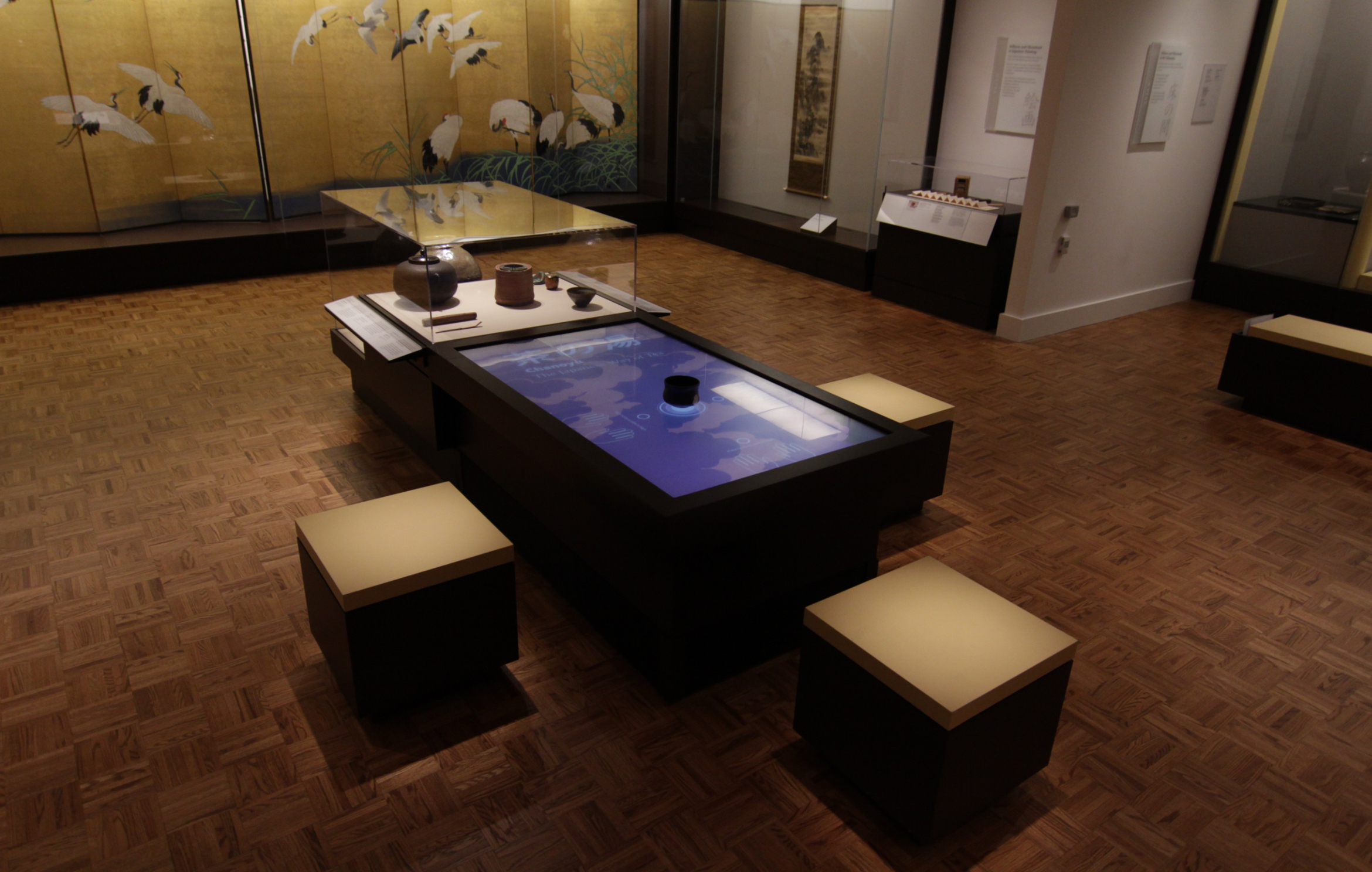
Japanese Tea Table
The Japanese Tea Table provides an opportunity for visitors to make a personal connection to the Japanese Way of Tea by reinterpreting the stillness and movement of a typical tea ceremony. Sitting at a giant digital table, visitors move through a digital storytelling experience using a 3D-printed tea bowl inspired by Japanese aesthetics found in the DIA collection. The animated story highlights the intricate process of making matcha tea, and thoughtfully considers the different roles and dynamics at play between the host and guests during a ceremony.

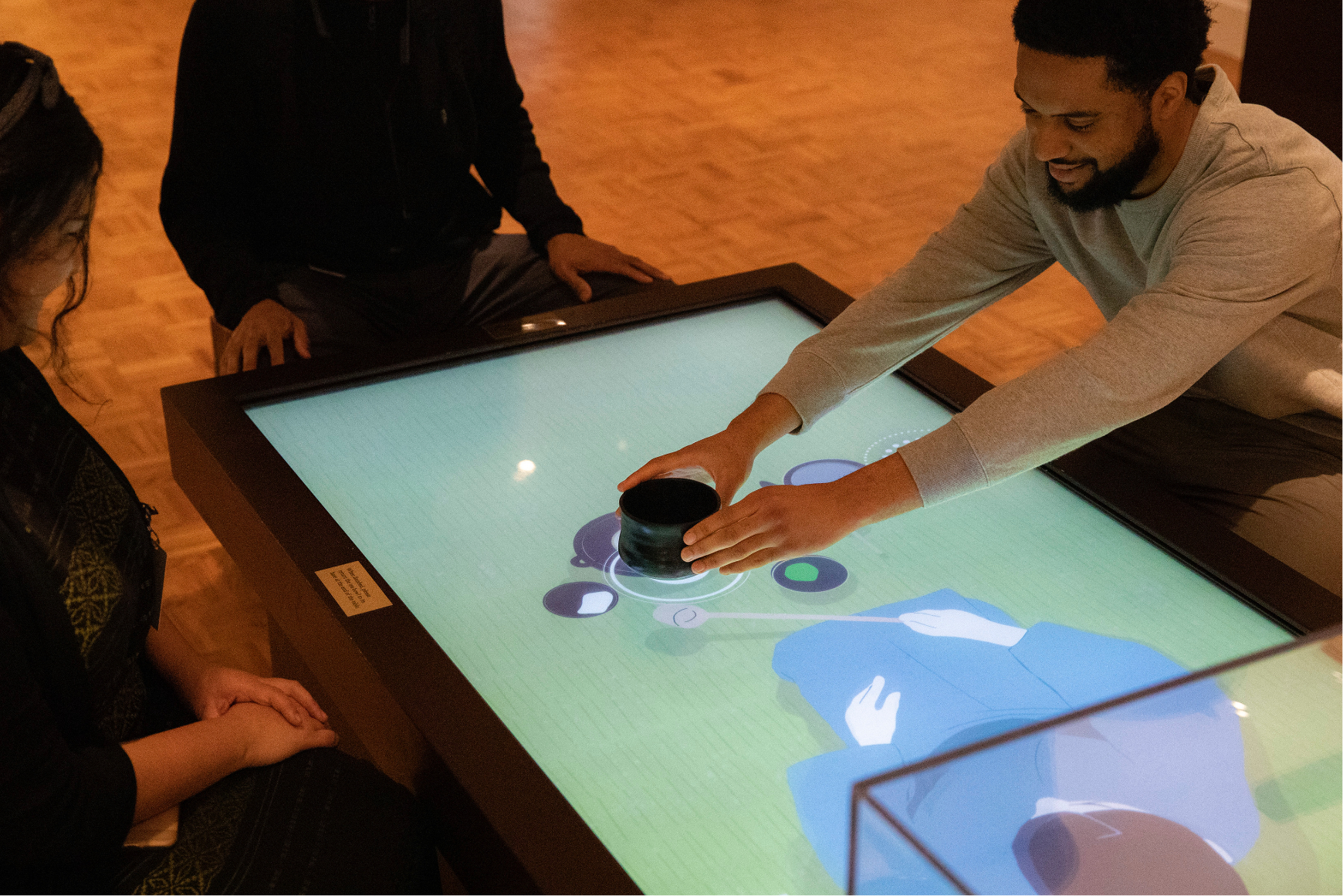
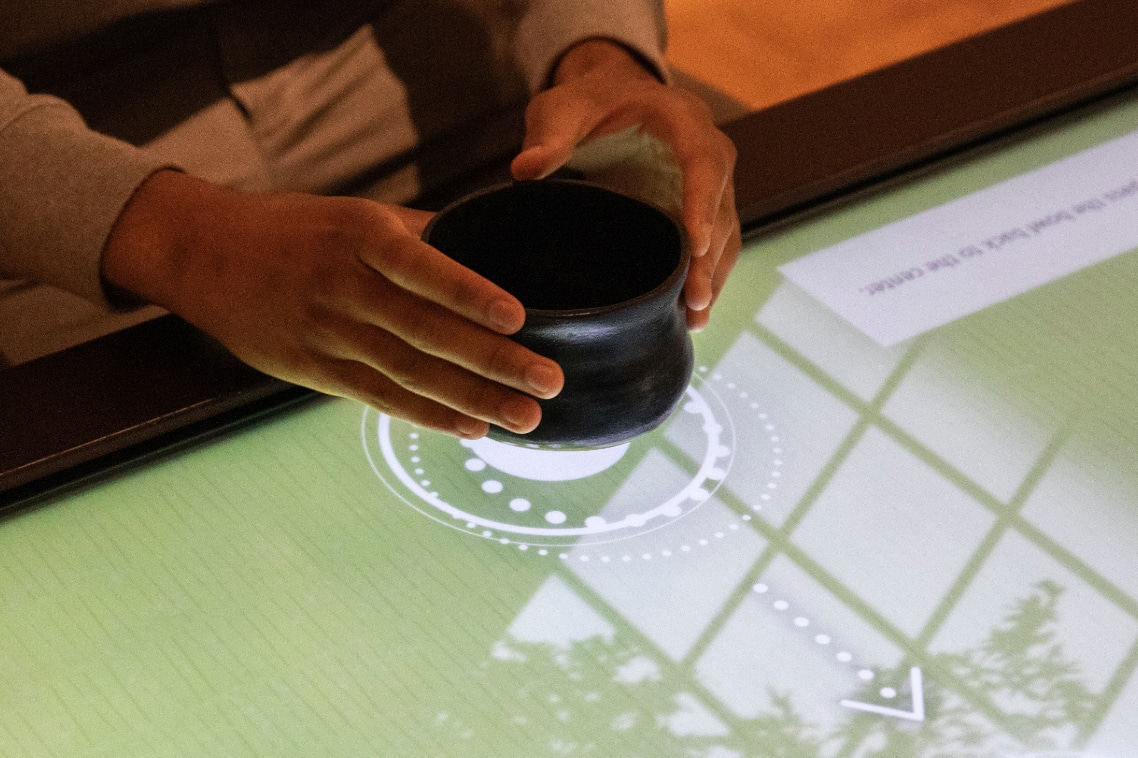
Chinese Handscroll
In the gallery for Chinese art, the Chinese Handscroll is a novel mechanical interface which simulates the act of unrolling a scroll in order to move through and learn about moments within Wang Wen’s scroll painting from the DIA collection, View from the Keyin Pavilion on Paradise (Baojie) Mountain. Chinese paintings were records of dynamic and ongoing exchanges between generations of artists and viewers. This interactive scroll not only allows visitors to view the entire piece digitally, but through physical interactions, visitors can participate in a scroll viewing in ways that were previously not possible in museum settings. This includes a moment at the end where visitors can choose a custom-designed digital stamp and mark the scroll—a tradition that would normally only be done by art collectors, friends of the artist, or the artists themselves.
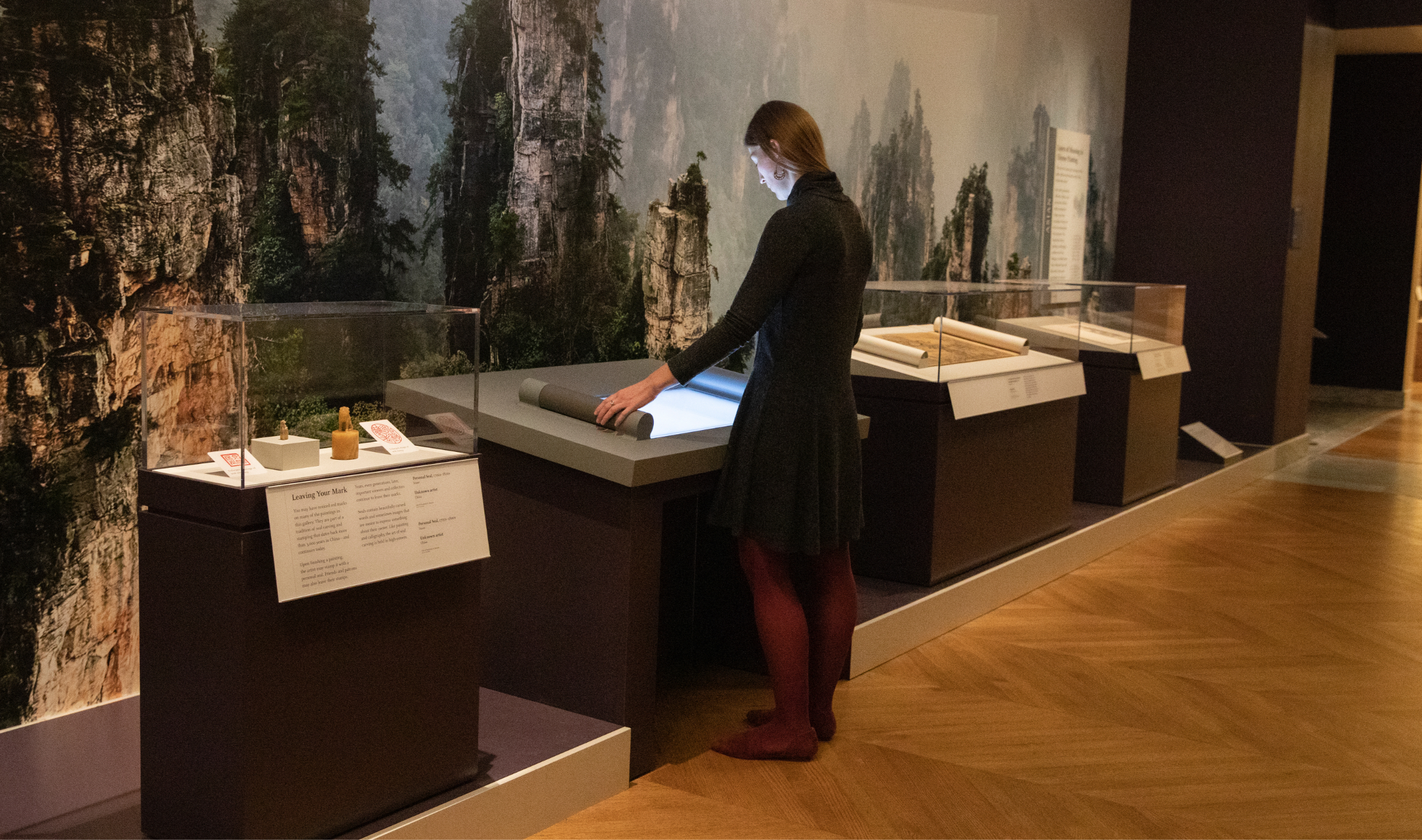
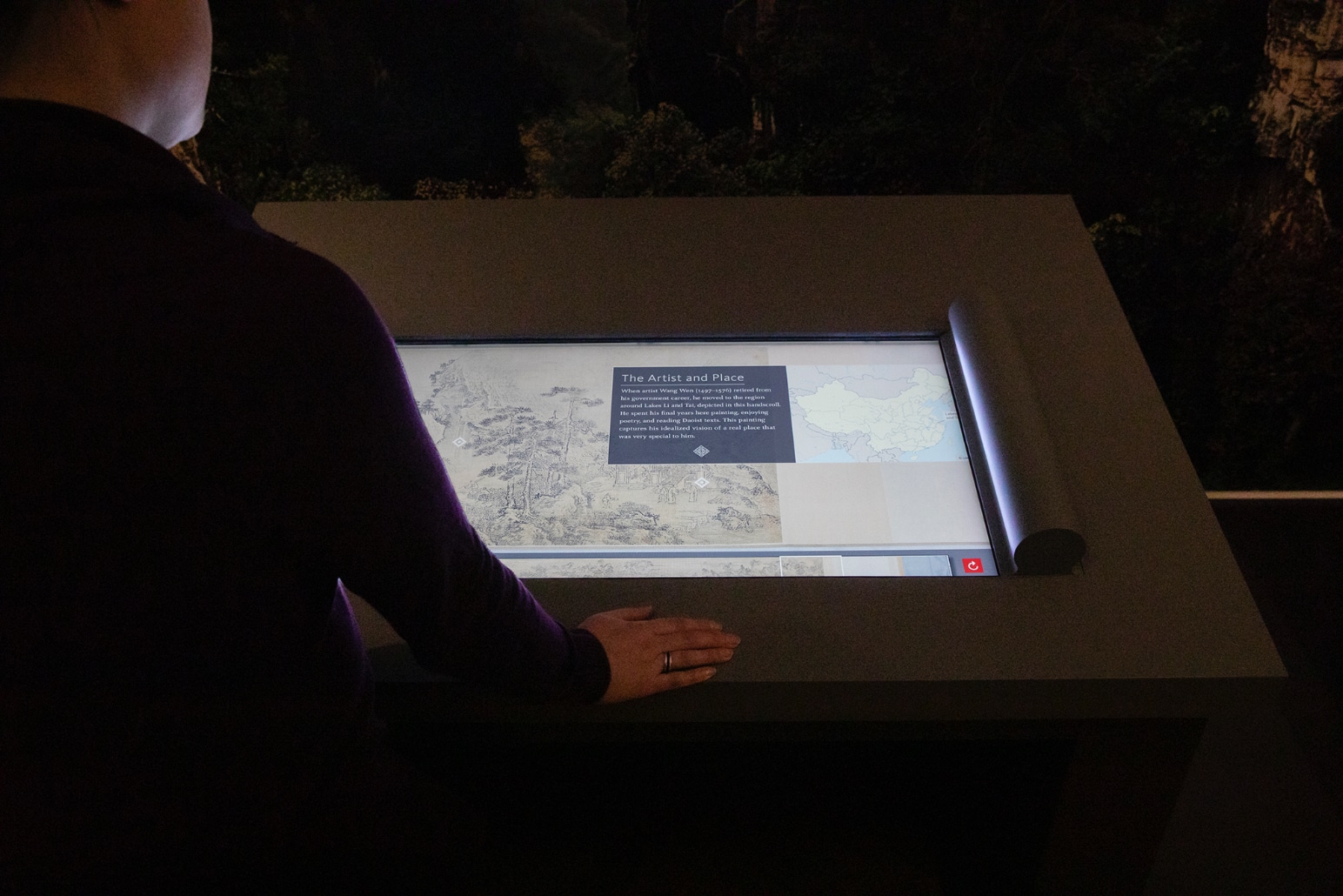
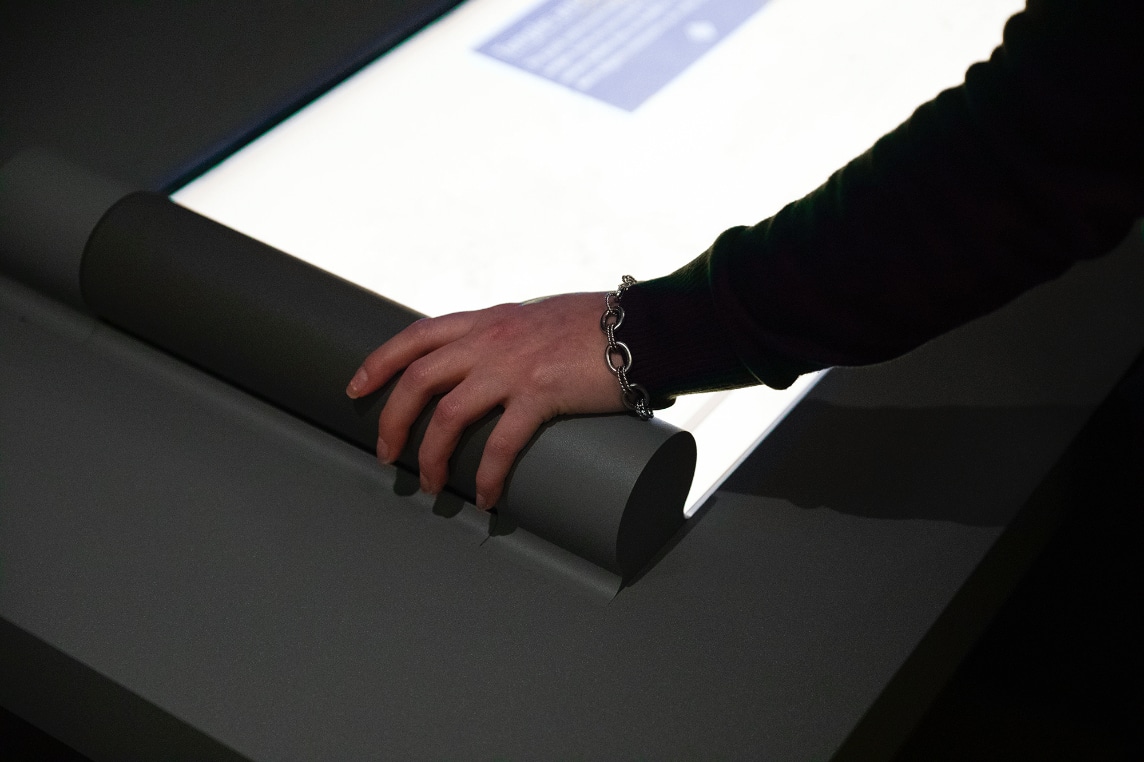
Indian Sound Station
In the Indian and Southeast Asian Gallery, the Indian Sound Station is located between several Indian court paintings. The Sound Station gives visitors the opportunity to play contemporary and modern Indian music while viewing the paintings, as a way to encourage a deeper connection to the artwork and elicit an emotional response, called bhava. This response is an important part of the traditional court painting experience and is often lost in museum environments. Every few months, a new rotation of hand-selected songs are available for visitors to engage with.
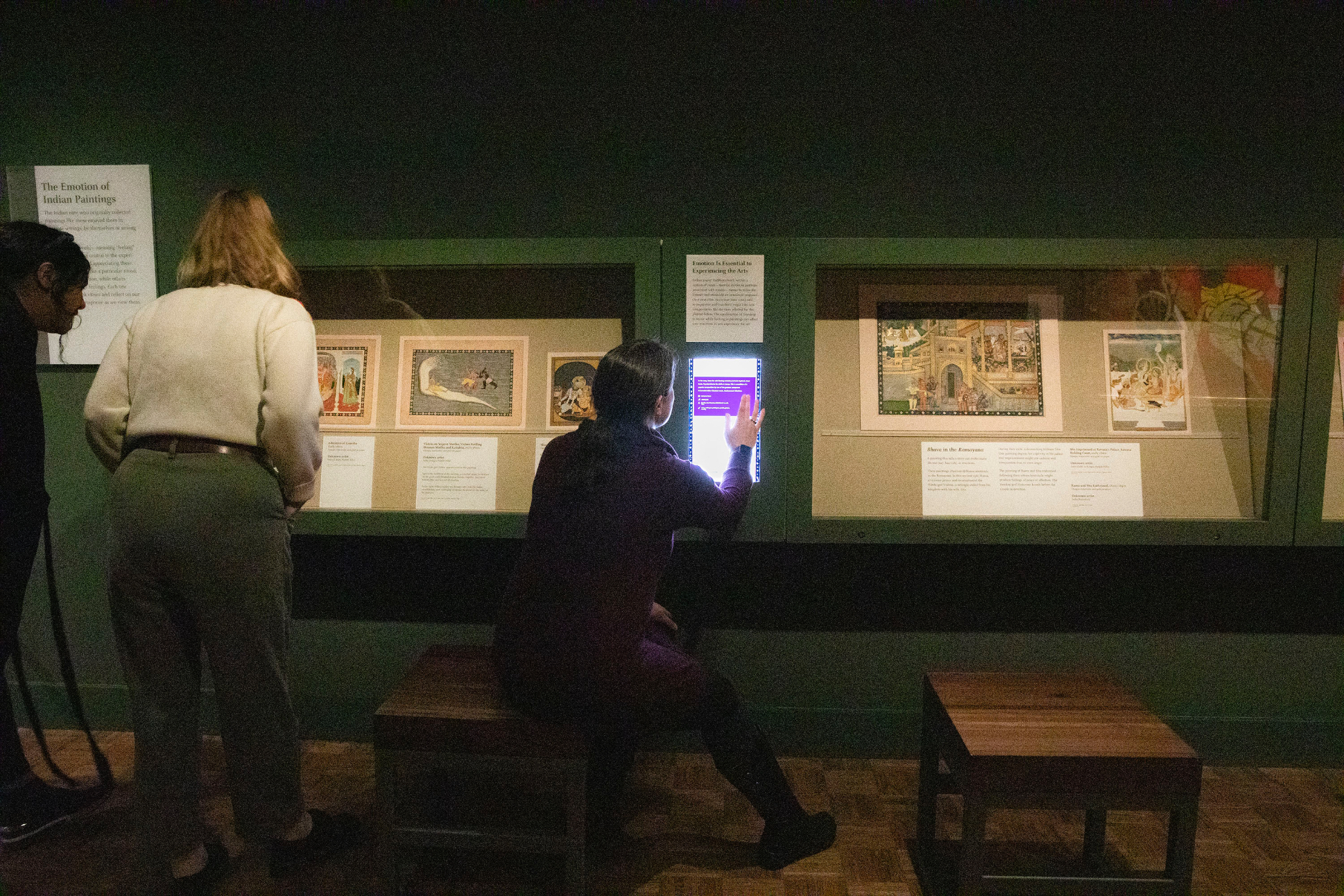
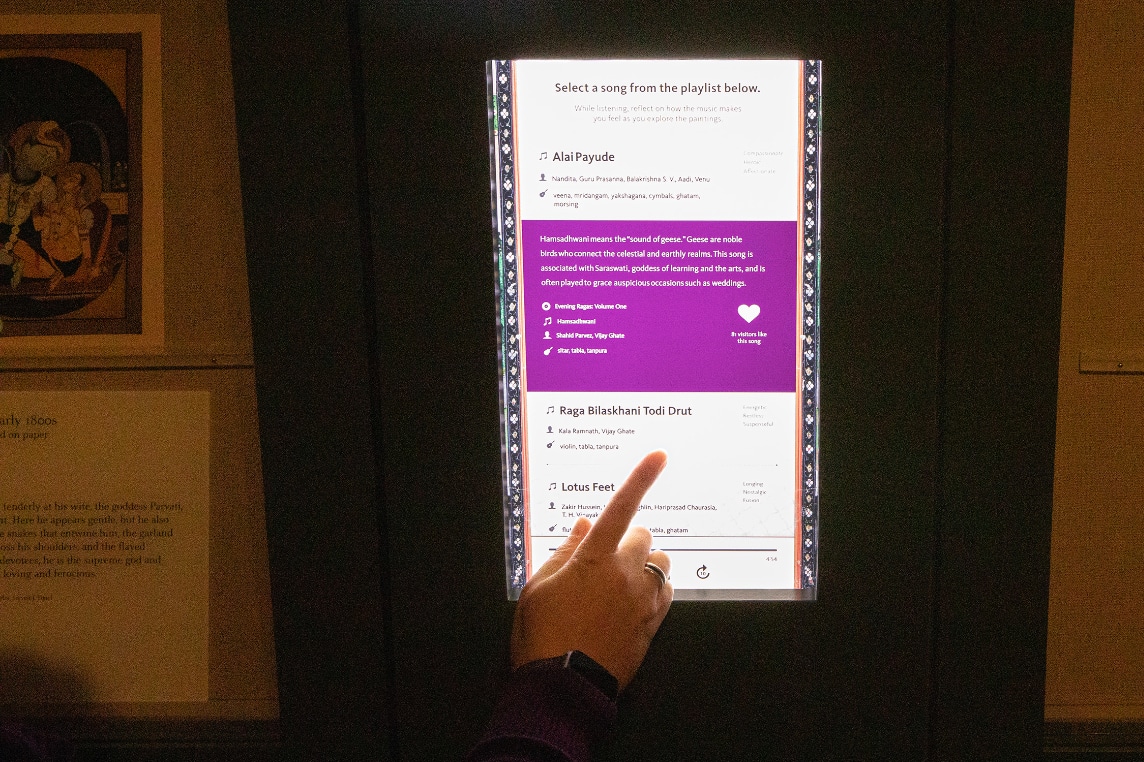
Process
A number of prototypes were developed throughout the process to test the technology, hardware, content and overall user experience, then tested both internally and on-site with museum visitors and cultural experts. The team invented custom technologies to solve for the unique interactions that were desired. This includes a custom 3D-printed sandstone tea bowl which serves as the centerpiece of the Tea Table. Moving it across the touch surface, it acts as a controller to unlock different moments of the narrative.
For the Chinese Handscroll, the team designed a moveable 'scroll handle' that allows visitors to 'unroll' the scroll and view different sections of the painting. The hardware embedded within it, a rotary encoder, was manipulated to communicate even the most subtle of movements, as if visitors were unraveling an actual painting before them.
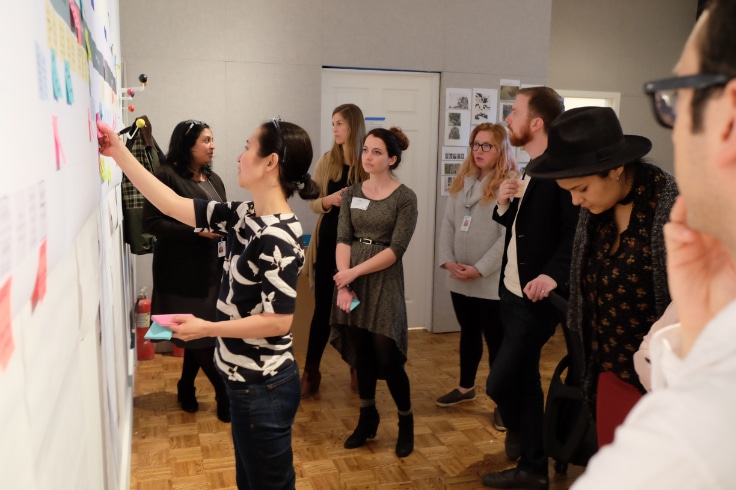
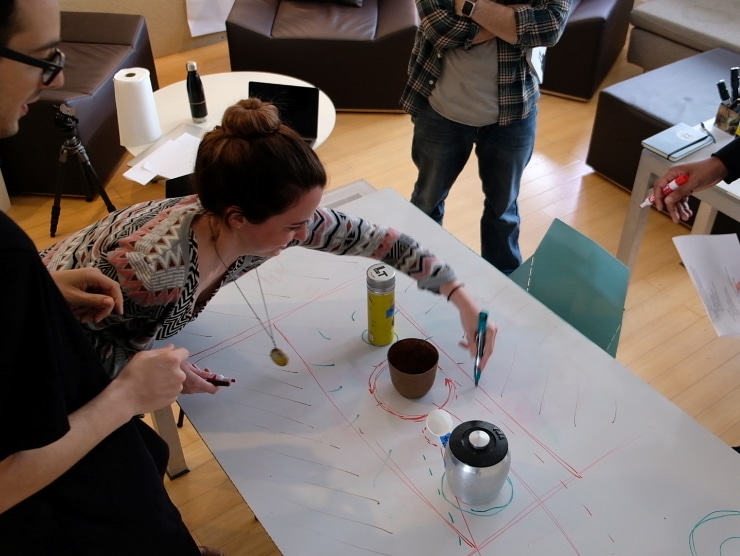
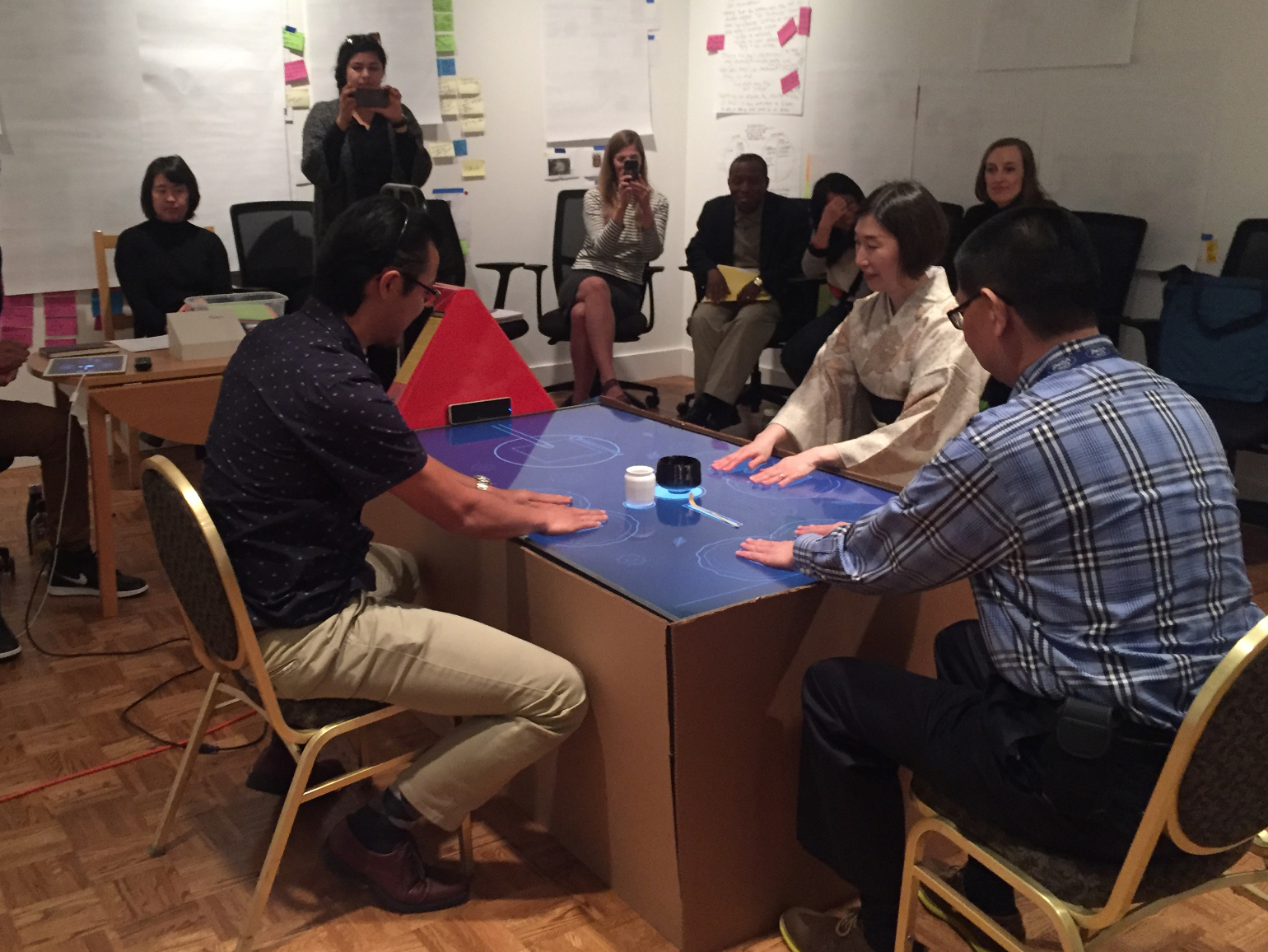
The installations are a permanent part of the Asian Galleries at the DIA. The seamless blending of digital and physical elements through interactive stories encourages visitors to linger, to take a longer look at the artwork, and immerse themselves in the culture and historical contexts from where they came.
“One of the things that this installation does is bring new technology to the enjoyment of the arts. We believe technology is not a substitute for experience of the arts, but a bridge... You can learn and explore our amazing works of art in different ways.”
Salvador Salort-Pons, Director of Detroit Institute of Arts
“This was easy to use. It's a close examination and explanation of what's in the painting. It led me to look at certain parts. I love the concept.”
Visitor after using the Chinese Handscroll
Project Data
Highlights:
• Debuted Nov 2018 with the reopening of the Asian Galleries and now a permanent part of the galleries.
• A traditional Japanese tea ceremony typically takes up to four hours - the team condensed the narrative to five minutes.
• The actual Chinese scroll that is navigated through digitally is over 30 ft long—yet only a shoulder width can be displayed at a time for preservation reasons.
Project team:
Tellart was responsible for the concept, design, technology, fabrication, and installation of the three interactives, with support from an international team of partners including KASCO, Pablo Diaz, AW Miller, Yuko Torihara, and Henry Li.
Sign up for our newletter
